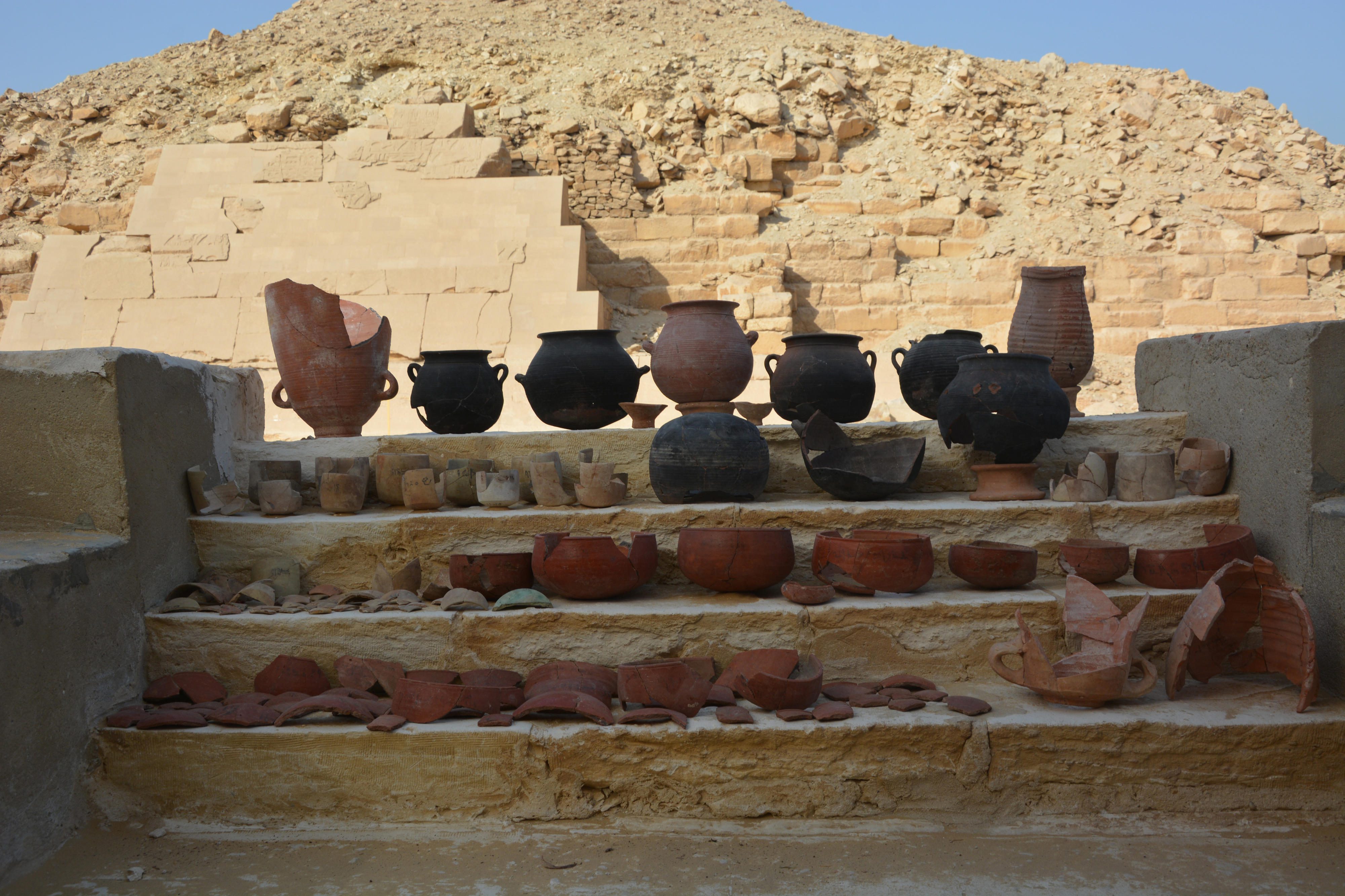The discovery of an Ancient Egyptian mummification workshop in Saqqara has enabled researchers to reveal the secret recipes that embalmers used to preserve different body parts almost three millennia ago. Astonishingly, many of the ointments involved in the process contained ingredients from far-flung parts of the world, suggesting that the Egyptians’ passion for mummification helped to prop up an ancient global trade network.
Dating to the 26th Dynasty, the embalming facility was found close to the pyramid of King Unas and is thought to have been in use between 664 and 525 BCE. While excavating the underground workshop, archaeologists came across 121 bowls and beakers inscribed with embalming instructions.
Among the information written on these vessels were commands such as “to put on his head” and “bandage or embalm with it,” while others were labeled with the names of embalming substances like “antiu” or “sefet”. Using gas chromatography–mass spectrometry, the researchers were able to determine the chemical composition of the residues contained within 31 of these receptacles, thereby revealing the exact recipes used for different stages of the embalming process.
“We have known the names of many of these embalming ingredients since ancient Egyptian writings were deciphered,” explained excavation leader Susanne Beck from the University of Tübingen in a statement seen by IFLScience. “But until now, we could only guess at what substances were behind each name.”
Prior to this stunning discovery, researchers had attempted to identify these substances based on a few ancient texts, including a vague mummification manual that is thought to have been written around 1450 BCE. However, the results of the researchers’ chemical analysis reveal that Egyptologists had been wide of the mark in their assumptions about some of these materials.
For example, the substance referred to as “antiu” has generally been translated as myrrh or frankincense, yet results showed that it is in fact a blend of cedar oil, juniper/cypress oil, and animal fats. Another important ingredient called “sefet”, meanwhile, was revealed to be “a scented unguent (fat-based formula) with plant additives.”
A total of eight vessels were inscribed with instructions for embalming the head, all of which contained mixtures of Pistacia resin, animal fat, beeswax, and castor oil. A further six pots contained information regarding the substances used to wash corpses, reduce their odor, and soften the skin, as well as recipes for treating the liver and stomach.

A selection of vessels that once contained embalming ointments. Image credit: Saqqara Saite Tombs Project, University of Tübingen, Tübingen, Germany. Photographer: M. Abdelghaffar
“Embalmers used the substances for their specific biochemical properties, as Pistacia resin, elemi, dammar, oils, bitumen and beeswax have antibacterial or antifungal and odoriferous properties, and thus help to preserve human tissue and reduce unpleasant smells,” write the study authors. “The hydrophobic and adhesive properties of tars, resins, bitumen and beeswax were useful to seal skin pores, exclude moisture and to treat linen wrappings.”
That mummifiers were able to select these ingredients without any apparent knowledge of microbes is staggering, especially when considering that many of the substances used weren’t available in Egypt and had to be imported from exotic locations. Resin from the elemi tree, for instance, would have been obtained from either tropical Africa or Southeast Asia, while gum from the dammar tree can only have come from Southeast Asia.
Other substances like Pistacia resin, olive oil, and cedar oil would have been imported from elsewhere in the Mediterranean. Noting the international selection of mummification materials, the researchers say their discovery provides “a glimpse into the trade and exchange systems required to run a comprehensive embalming industry.”
“Ultimately, Egyptian mummification probably played an important role in the early emergence of global networks,” said study author Maxime Rageot.
The research has been published in the journal Nature.
Source Link: Ancient Egyptian Recipes For Embalming Specific Body Parts Revealed By Mummification Workshop